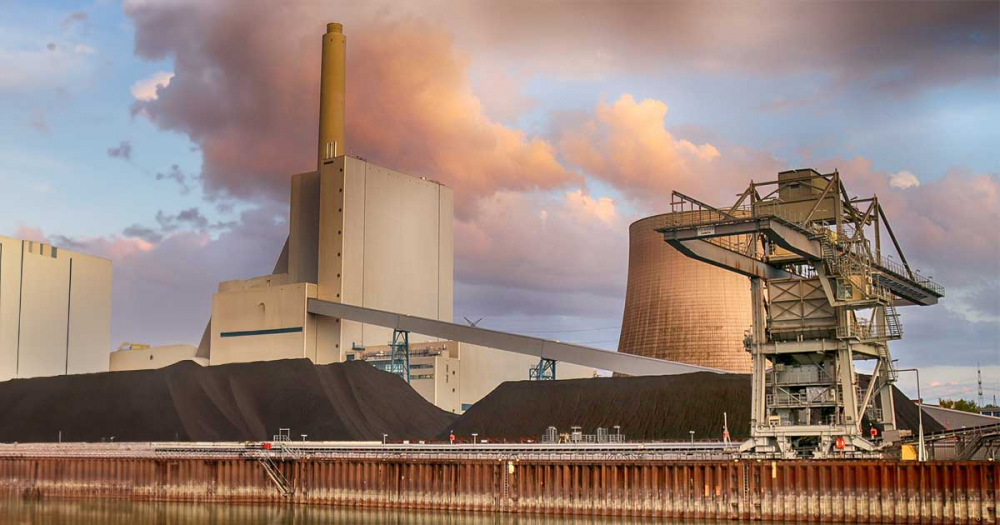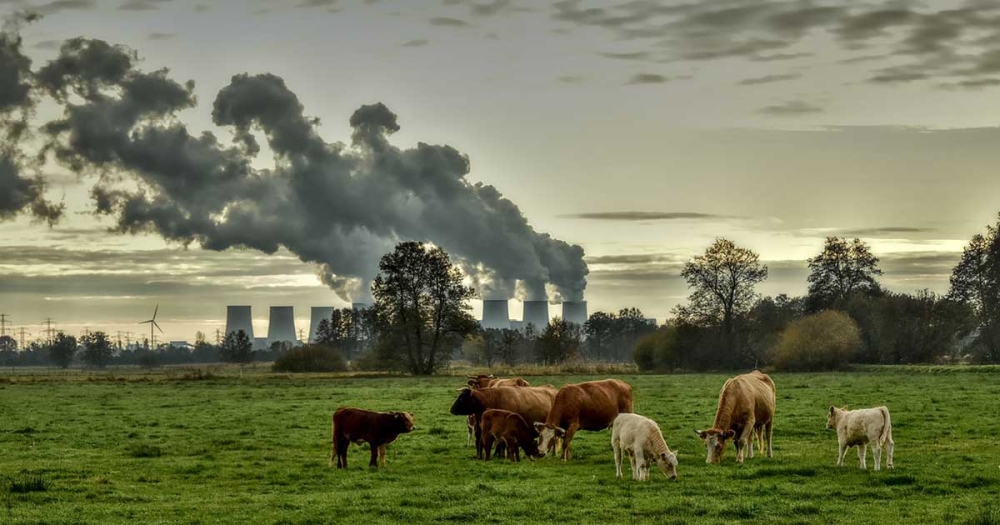The utilization of coal for energy production and industrial utilization has been at the center of debates related to climate protection and energy transition for a long time. On the one hand, coal is still the most important energy source globally for electricity generation, iron, steel and cement production, while from the point of view of carbon dioxide (CO2) emissions it is the biggest source, on the other side. Therefore, the majority of EU member states already had plans for the gradual closure of coal and lignite-fired power plants (see ’coal exit’ plans).
Despite climate protection and clean energy transition goals, the current energy crisis has forced many countries to increase coal-based energy production, according to the International Energy Agency's (IEA) Coal 2022 analysis (download pdf). The question is whether we can expect a coal revolution, and in close connection with this, is there another reason for the increase in energy use of coal besides the energy crisis?
Global coal demand increased in 2022, energy crisis, sanctions, wars, economic slowdown here or there
Due to the Russian-Ukrainian war and the 5th EU/G7 sanctions package - in which member states were banned from importing Russian coal - coal markets became unstable, traditional supply chains were interrupted, and wholesale prices quadrupled. Interestingly, despite the economic downturn, demand increased by 1.2%, reaching an all-time high, exceeding 8 billion tons/year for the first time. The IEA's 2021 annual market report said global coal demand could reach a new peak in 2022 or 2023, followed by years of stagnation and then decline. The outbreak of the Russian-Ukrainian war in February 2022 and the 5th sanctions package then sharply changed the coal trade situation, price levels, and supply and demand dynamics.
The price of fossil fuels rose significantly in 2022, with natural gas rising the most (sixfold price increase between 2021 and autumn 2022). This initiated a wave of disengagement from gas, which in practice was mostly manifested by restarting coal-fired power plants held in reserve and extending the operating time of those intended for shutdown. This increased the demand for coal, which of course resulted in an increase in prices. The EU's coal consumption in electricity production rose from 449 million tons in 2021 to 478 million tons in 2022. At the same time, the EU member states' own coal production also increased from 332 million tons in 2021 to 357 million tons in one year, which is a jump of 7.3%.
Due to the higher coal prices, the high level of the carbon dioxide quota price, the carbon taxes, as well as the effect of the weakening world economic growth would have reduced coal demand to an equilibrium situation with a stagnant coal consumption could have set, at least this is what the IEA analysis predicted. According to them, the "coal revolution" in the EU will only be temporary, a passing malaise. The dependence on pipeline natural gas supplies from Russia has made EU vulnerable, furthermore, lower hydro and nuclear output due to weather conditions, as well as technical problems at French nuclear power plants, have put additional pressure on the European electricity system. In response to this, a significant number of EU member states increased coal-based energy production, supplemented with accelerated inclusion of renewable energy sources and, where it was possible, reduced the maintenance time of nuclear power plants and extended operating hours.
However, a really significant change occurred only in Germany, where the capacity of the coal and lignite-fired power plants in operation increased by 10 gigawatts (that's the electricity consumption of one and a half of Hungary). Anyway, the use of coal for energy purposes in the EU will return to the downward path from 2024 according to the IEA's prediction.
The EU would press hard on the coal brake, but the decisive word belongs to China, which accounts for 53% of global coal consumption
China is characterized by an interesting duality in its energy policy. On the one hand, it invests more in the renewable energy sector than the USA and the EU combined, and on the other hand, it has authorized the construction of more coal power plants citing the energy crisis than at any time in the past seven years, despite the government's promises and goals. In the first half of 2023, 37 gigawatts (GW) of new coal-fired power plant capacity began construction, 52 GW were commissioned, 41 GW of new projects were announced, and 8 GW of previously abandoned projects were renewed.
The question is, what is driving the recent wave of licensing of new coal power plants in China, at the beginning of the renewable energy era?
Paradoxically, one of the reasons for the wave of permits for new coal power plants can be traced back to climate change. Due to the continuous drought and last summer's historic heat wave, the sale and electricity consumption of air conditioners increased greatly, and at the same time, significant hydropower plant capacities also fell out of system control due to the drought. Due to the heat and drought, rivers have almost dried up, including parts of the Yangtze, which still has plenty of water. In the heat, the performance of solar and wind power plants also decreased, China simply had nothing to touch. Added to all of this, the high price of liquefied natural gas (LNG) imports further slows down China's shift from coal to cleaner energy sources like natural gas in the coming years.
While in 2022 and in Q1-Q3 of 2023 the relative price increase of alternative energy sources, in the heating season of 2023 and the beginning of 2024 the cold drove the increase in coal demand
The IEA predicted in 2022 that the EU would reach a coal consumption plateau in 2024. In comparison, we see that not only Germany, Great Britain, the Netherlands, Spain, Greece, Romania, Denmark, Poland, Hungary and Italy are postponing the shutdown of their coal and lignite-fired power plants (Figure 1), but also France. A few days ago the news spread that the coal-fired units of the more than 1.500 MW Émile-Huchet power plant, which produce both electricity and heat in combination, will be put back into operation temporarily. The oldest of its blocks started in 1958, meaning that it is far not efficient and far not climate-friendly. In Hungary, the originally planned shutdown of the lignite-fired units of the Mátra Power Plant in 2025 will be postponed until 2027, when the new natural gas-fired 650 MW CCGT unit comes into operation, in order to avoid an increase in electricity imports. Of course, we don't even get our heads around this, since such measures have been taken in many countries due to the Russian-Ukrainian war and sanctions. But this is not what we are talking about here, but rather a colder-than-expected winter.

Figure 1 - Coal-fired power plants provided 40% of the EU's electricity production in 1990, but only 13% in 2020. By 2021, around half of Europe's 324 coal-fired power plants will have closed or announced they will do so before 2030. Today, the share of coal-fired power plants is once again above 20%. Coal production is on the rise, with Germany, France, the UK, the Netherlands, Spain, Italy, Greece and Austria taking steps to extend the life of coal-fired power plants and restarting shutdown plants. In Hungary, the originally planned shutdown of the lignite-fired units of the Mátra Power Plant in 2025 will be postponed until 2027, when the new natural gas-fired CCGT unit comes into operation, in order to avoid an increase in electricity imports. Source: International Energy Agency (IEA) 2023
The heat market is also a segment of the energy sector where the role of solar and wind power is limited
From the point of view of energy consumption, climate change has slowed us down a bit here in Europe. We are used to the fact that there is almost no frost, we need to heat less and less, we can drive almost safely and everything is always available in the shops. Despite all forecasts to the contrary, it is certainly colder, freezing and snowing in most of Europe. The news is nothing more than that the flood situation is escalating in the countries of Western Europe, thousands of buildings have been flooded in Great Britain, France and Germany, and the governments have promised financial assistance to the victims. Meanwhile, cold records are being broken in Scandinavia. Minus forty-four degrees were measured in Finland, Sweden and Norway - this has not been the case for 25 years - in Denmark there were many accidents due to snowfall. But the cold has arrived in Central Europe and Hungary as well, the thermometer dipped below minus 10 degrees every morning in the first half of January, minus 23 degrees were measured in the sinkholes of the Bükk Plateau. In this situation, it seems that the EU cannot do without coal-fired power plants, a significant part of which operate in combination, i.e. they produce both electricity and heat, the latter to meet the needs of the heating sector and district heating providers.
Despite record profits for producers, banks have little appetite for further investment in coal mining and coal-based power generation. However, the game is not yet decided
In the EU - where the carbon dioxide quota trading system and carbon taxes do their job - and in those countries where strict air pollution limits have been introduced and are being adhered to, the coal return is not expected to be permanent. Investment banks will also not get involved in risky coal industry developments where the return on their investments is not guaranteed, and insurance companies will only offer their services at high prices. The end of war conflicts will bring the development of new value- and trade chains, the energy crisis will end, and the greening will be continued. However, there is a chance that regardless of this, energy prices will not return to their previous lower level. This may result in lower liquidity in rapidly growing developing countries – generally BRICS member states – which will push them out from the expensive LNG market. As a consequence, they will turn back to coal in the long term. We can see such examples even today, look at China, India, Vietnam, Indonesia, etc. Moreover, it is not the energy market, but mostly the energy policy that decides on large investments in these countries. Thus, if cost and security of supply considerations justify it, they will decide in favor of coal, which seems to remain indispensable in the steel industry (the carbon content of steel is adjusted with coal, which determines its applicability), in combined energy production and the heat market.
Returning to the question posed in the title, that is, how will carbon dioxide emissions be reduced here, if the use of coal increases, the answer could be summarized as that alternatives to coal must be found in the critical segments. Heat production in the heating sector, carbon content control and energy production in the steel industry, energy production in developing countries with large coal reserves but lack of liquidity. In these cases, it is necessary to find cost-effective ways of replacing coal with renewables (see biogas, green and decarbonized hydrogen, electricity-powered heating systems, etc.), or it is necessary to be able to utilize coal and lignite in a climate-friendly manner (see clean coal technologies, methanol economy, carbon-dioxide capture, storage and recycling - CCUS). The goal is that decarbonization should not only be a privilege of rich countries, but should become truly global.




